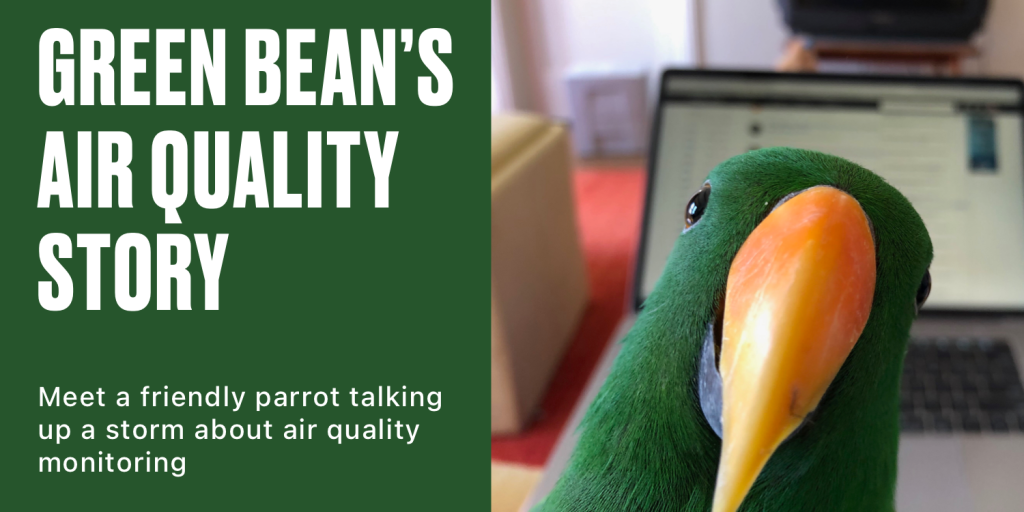
Hello Green Bean, please tell us about yourself.
I’m a 4.5 year old male eclectus parrot, and as you can see, I’m very green!
What makes us eclectus parrots unique is that we are the most sexually dimorphic of all 350 types of parrots. In contrast, females are mostly red with a little blue or purple — I just think they are gorgeous! I don’t have a mate yet, though; I’m still a bit too young. My life span could be 30-40 years or more!
I live at home with my human, Victoria, who adopted me from a bird store in San Francisco when I had a broken wing. I now have a partial wing amputation, so I don’t fly. Victoria refers to me as a “gymnast”, though, because I am so adept at climbing all around my cage. I can also swing from the bars almost like a monkey. I am a very happy, easy-going guy!
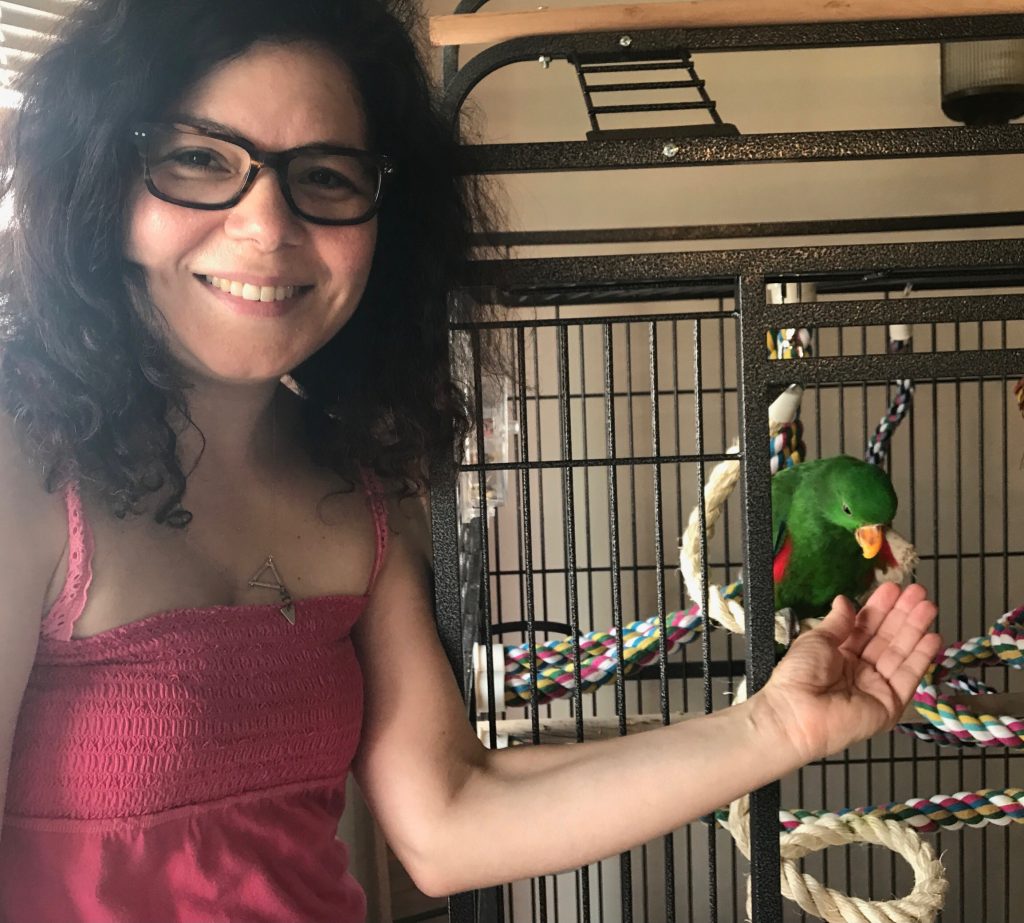
Victoria says my personality is more like a dog’s than a cat’s because I crave attention from people. When I go outside for walks, I like to surprise them by saying “Hello there!” or even blowing them kisses – “mwuh!”
At home, my favorite things are sitting by the window, foraging for nuts, beans, and fruits, and chattering along to the radio (I’m definitely not a songbird). BTW, I’m also a great “guard bird” and keep the house safe.
But enough about me — let’s talk air quality!
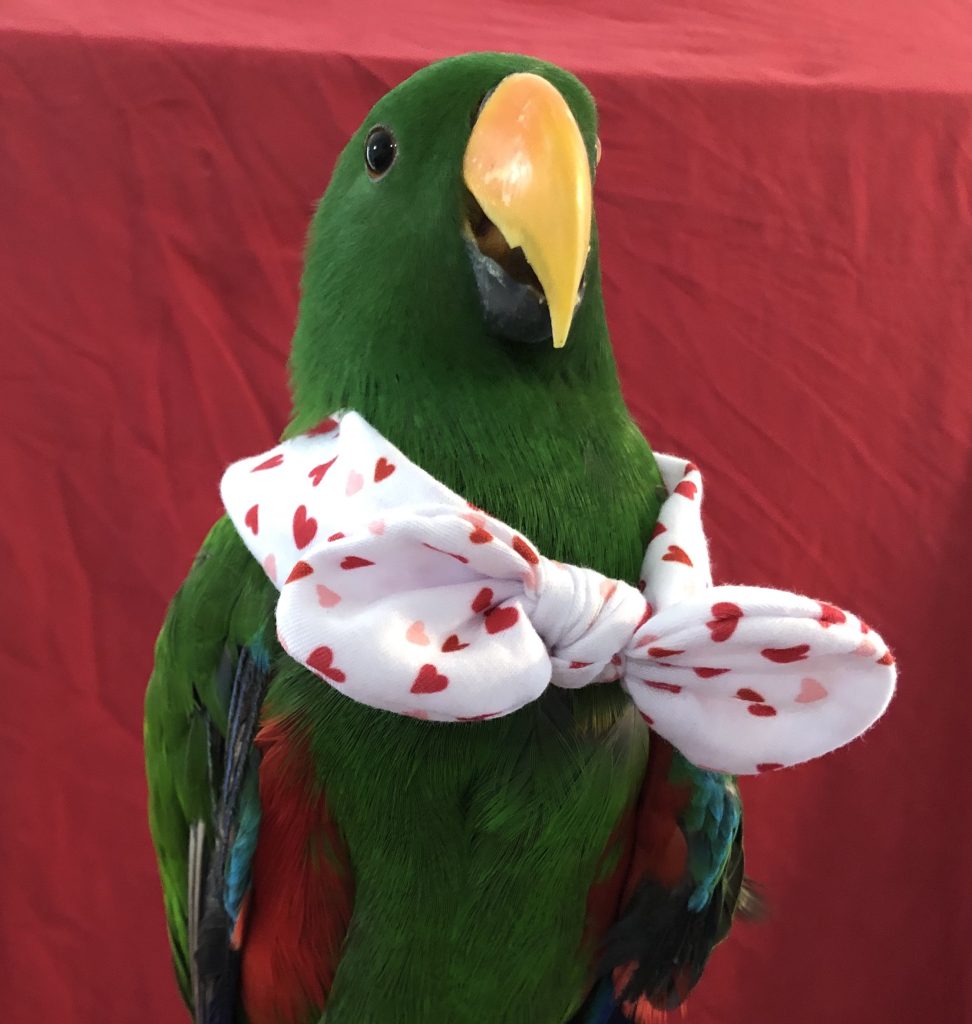
Although you are living in Northern California now, you originally come from the Solomon Islands, a series of islands in Oceania to the east of Papua New Guinea. What is it like there? And how is the air quality there?
I’m a California bird, but my ancestors came over from the Solomon Islands, possibly in the 1980s when eclectus parrots became more common as pets.
Ah, my beloved homeland: it’s very remote with blissful waters, lush rainforests, and even volcanoes. The temperature rarely varies outside the narrow range of 70-90 °F (21-32 °C). The Solomon Islands are near the equator, so they get about 12 hours of light daily all year round. We eclectus parrots live among about 700,000 human islanders and about 300 types of birds, over 70 of which are endemic to the area (as are some types of mammals).
The air quality around the islands has been called “moderately unsafe.” We’ve had a big problem with logging for many decades (Hello! We live high up in the trees!). Of course, deforestation increases levels of carbon dioxide, which makes air quality worse. Sadly, the islands also suffered two major oil spills in 2019.
What are the reasons why you monitor your local air? Do you have any special sensitivity to air pollution?
Victoria says the great thing about crowd-sourced local air quality data from Local Haze is that it provides actionable data that can be used to improve air quality at home. If it shows the air outdoors isn’t good, I don’t get to go out for my walks, while she will wear a mask when she’s out.
We also have a Purple Air sensor that we use indoors to monitor air quality. It’s helpful to compare those readings to what the outdoor Purple Air sensors say to help determine whether bad air has an inside source like from cooking or whether it’s coming in through the windows. Sometimes it’s a game of opening and closing windows to see whether the changes make the air quality readings better or worse. It’s important to do what we can to improve indoor air, though, because air contaminants in a home can build up rapidly, yet dissipate VERY slowly.
Victoria has to take extra care with me because birds’ lungs are much more sensitive than humans’. Heated non-stick pans, air fresheners, scented candles and many other household products can make me really sick or even kill me. As you might guess, I’m also just much more sensitive to bad air quality in general.
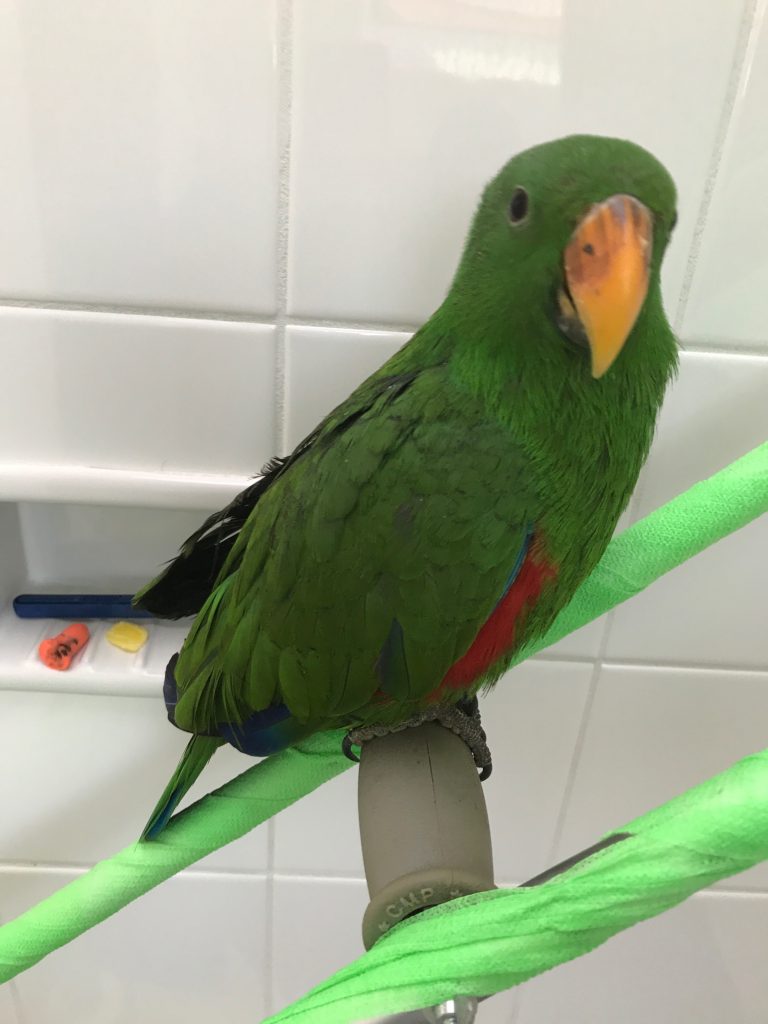
How often have you experienced poor air quality?
The last few years have been tough with all the wildfires!
Our home was older with leaky windows, which let in the smoke on top of the usual pollution from rampant construction, motor vehicles, etc. We get “Spare the Air” alerts in the San Francisco Bay Area when the air quality is going to be bad, but those of us who are sensitive feel it much more often. The air may just be bad for a small portion of the day, but the effects can linger for hours afterwards.
Victoria checks Local Haze daily to determine the source of any potential problems and resolve them before they get out of hand.
How does air pollution affect you?
It’s hard sometimes because I have to breathe through my mouth when the air gets bad. Whether parrot or human, it seems all of us on the west coast of the US are guinea pigs; since the long-term effects of increased wildfires and other damaging effects on air quality take many, many years to study. To what extent will we have higher rates of lung cancer, emphysema, heart problems, birth defects or other diseases in our communities that perhaps we haven’t even considered yet?
I hate to think that I am the “canary in the coal mine,” and it’s important to mention that just because someone isn’t having symptoms doesn’t mean they aren’t sustaining long-term harm from air pollution. The wildfires are also challenging because the particular contaminants they release will really depend on what is actually burning!
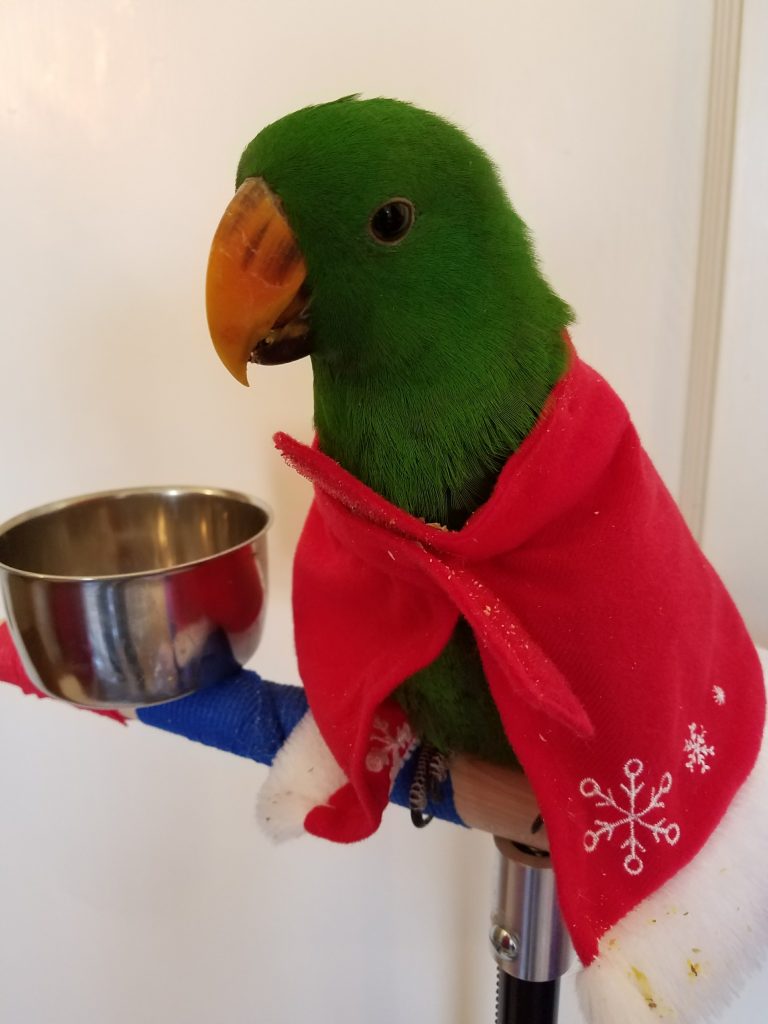
For what type of air pollution are you monitoring?
Victoria here – I’ll take this one: A few years ago I noticed I seemed sensitive to the air quality and was having some respiratory symptoms and related fatigue and headaches.
In addition to the outdoor air pollutants mentioned previously, I learned indoor air pollution can be even more significant at times. It has numerous sources like biological agents (e.g., dust mites, mold, pollen, bacteria, viruses) and combustion products (e.g., gas stoves and heaters, fireplaces, stored fuels). Other potential indoor causes of volatile organic compounds (VOCs) –i.e., gases emitted into the air– are building materials, furniture made from pressed wood products, paints, cleaning and personal care products, dry cleaning and aerosol sprays.
Do you use any special technology like air quality sensors and applications to monitor your local air?
In addition to the Purple Air, we have a Dyson Pure Hot+Cool Link in another room. The Local Haze application allows for monitoring of air quality. The Dyson applications allow monitoring not only of air quality but also of temperature and humidity, so we can keep the conditions as close as possible to how they are in the Solomon Islands (although Victoria doesn’t want mold growing in the house so we do have to compromise on the humidity level a bit).
I should mention we also have two Austin Air Healthmates, which did a great job purifying the air even during the worst of the wildfires.
Is there anything else you would like to say?
Don’t get me started – I am a very chatty guy, and there is nothing i love more than babbling away all day while listening to Spotify!
I’ll leave you with my very favorite word which I say up to 50 times a day: “Peek-a-Boo!” Oh, and “I love you! Mwah! Mwah! Buh bye!!!”
Green Bean, thank you for letting us interview you and for your thoughts on air quality monitoring!
The Local Haze app can be downloaded for free on the Apple App Store.
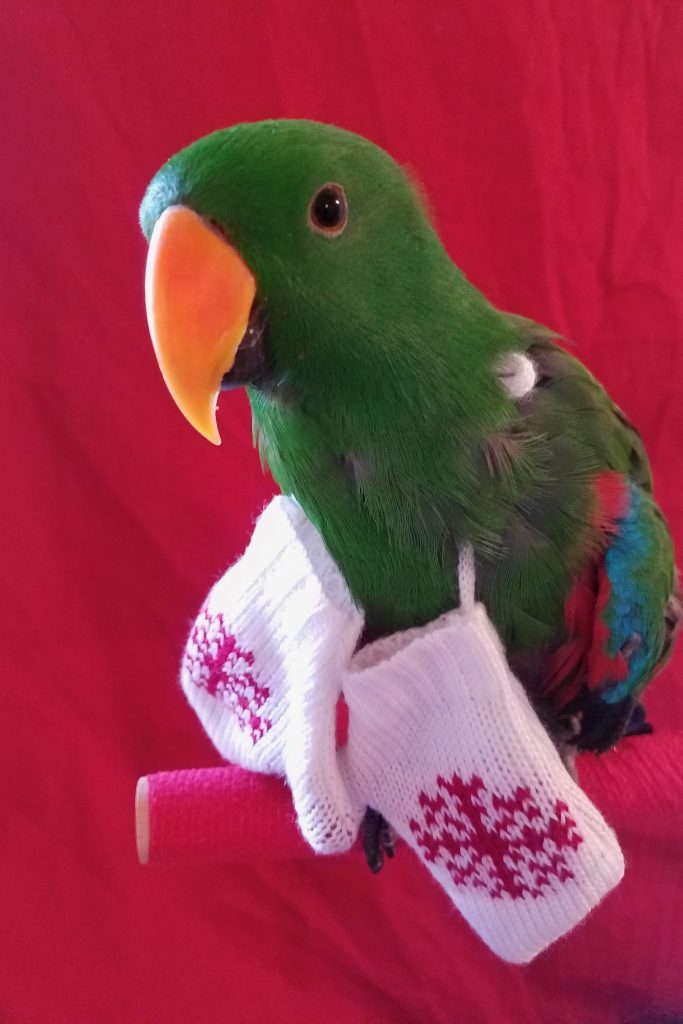
References
Eclectus parrot lifespan | Eclectus roratus
Solomon Islands Climate, Weather By Month, Average Temperature (Solomon Islands)
Avibase – Bird Checklists of the World – Solomon Islands
Solomon Islands, east of New Guinea | Ecoregions | WWF
Solomon Islands General Health Risks: Air Pollution
Lush forests laid to waste: how Pacific Islands got hooked on logging
Solomon Islands: Bay hit by oil spill suffers second contamination crisis
Fresh Air Is A Must — For The Birds DVM — Avian Vet
National Geographic Society – Air Pollution
Spare the Air alerts residents of the San Francisco Bay Area when air quality is forecast to be unhealthy and shares information on ways to reduce air pollution.
Air Pollution: Current and Future Challenges | US EPA
How Does Deforestation Affect the Air?
What Are Possible Sources of Indoor Air Pollution?
Volatile Organic Compounds